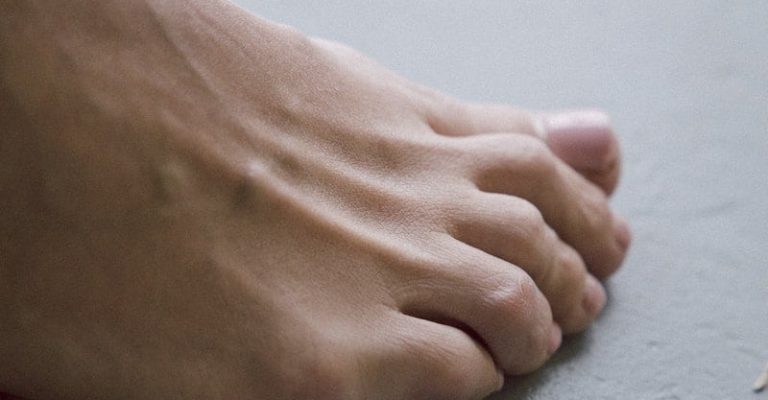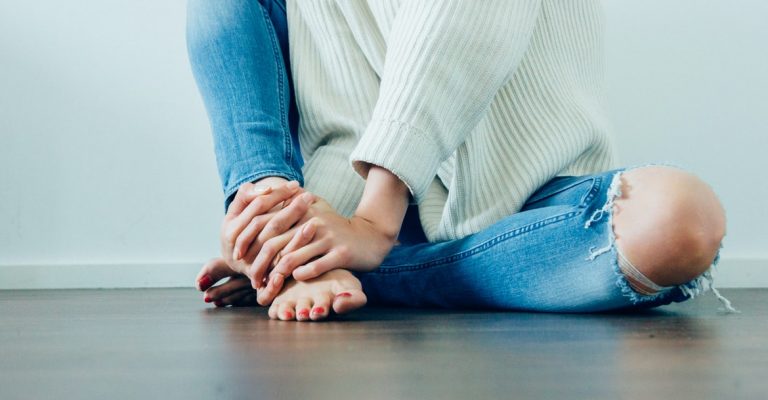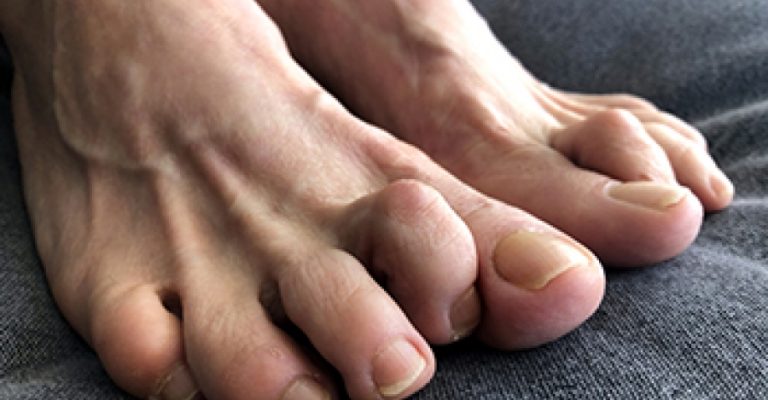Table of Contents
Types of Curled Toes
The types of deformed curled toes are as follows:
Mallet Toes
The abnormal bend exists in the last joint of the toe which is closer to the toe nail.
Hammer Toe
It has an abnormal bend in the middle joint toe. In this deformity, the second toe is the most affected. The reason why it’s called a hammer toe is because it resembles the hammer as the toes curl inward.
Claw Toe
The abnormal bend exists in the middle and last joint of a toe which is closest to the toe nail. It can also be due to your feet’s weakened muscles. This can affect one or more than one toe.
There are different causes that can lead to your curling toes. The root cause can be an imbalance of muscles in the digits. The toes become stuck initially flexibly and then rigidly as the muscle that straightens them becomes too weak to oppose its partner. Other reasons are as follows:
Misfit shoes
Wearing shoes that are either too tight or do not fit properly leads to stress on your toe muscles, so must be straight and relaxed. Tight shoes can squeeze and bend the toe. Moreover, wearing heels also puts pressure on your toes which can cause this condition.
High Obesity
Severe obesity causes pressure on toes causing strain on toe muscles. A study reveals that obesity in men is the cause of curled toes.
- Genetics
- Toe injuries
You might be wondering why do my toes curl down. A severe foot injury can cause toes that curl under.
Other reasons for curled toes are strokes or nerve damage, arthritis, and diabetes, which can cause systematic conditions, among many more. However, curled toes should be treated as they can lead to complications, difficulty, and pain in mobility.

First Signs and Symptoms of Curled Toes
Are your toes curling inwards or your second toe curling under, leaving you puzzled?
These could be the first signs and symptoms of Curled Toes. Curled toes, also known as toe flexion, is a condition where the toes have a tendency to curl under the foot.
This can happen involuntarily, leaving many wondering what causes involuntary toe curling.
Curled toes meaning can be associated with various underlying conditions like neurological issues or even due to inappropriate footwear. The prime indication of this condition is observing your toes curling under, majorly in the resting position.
You may even notice your second toe curling under more than the others.
Another symptom to watch out for is if your toes are curling inwards, which can gradually become a persistent problem if not addressed timely.
These can be easily mistaken for foot cramps, but if you find your curling toes unimproved despite measures, it’s time to consult a healthcare specialist to get a deeper insight into why your second toe is curling under. Don’t ignore these signs if you are experiencing them.
How to Straighten Curled Toes

Now you won’t have to worry thinking why do my toes curl under or how to stop curling toes when walking. Here’s how to fix curled toes:
Fit Shoes
Buy shoes that are comfortable and perfectly fit. Make sure the shoes are not tightly fitted so they put pressure on any toe muscle. Moreover, avoid high heels so they do not cause stress on your toes and make the condition worse. It is important to wear good, supportive shoes in this condition to prevent it from getting worse. Moreover, you can also use roomy shoes that will help straighten up your toes as they will give room for your toes to wiggle. Shoes with bigger toe space will help in such conditions.
Exercises
The better way to treat curled toes is by exercising at home or in any Rehab. There are certain stretches that must be added to your routine in order to deal with your toes that are curling inwards.
Toe Lift
Toes should be raised off the ground and lower, and this should be repeated 10-20 times. If you can’t move the toe in the beginning, don’t worry. Take it slow and start with a slight movement.
Stretch your toes
Try to stretch your curled toes as much straight as you can and hold for 5 seconds. If it is painful, try short repetitions and gradually increase reps.
Marble Pickups
Place a few marbles on the floor and try to pick them up with your toes. It is going to be challenging so you can ask for assistance.
Towel curl
A towel must be placed on the ground, and try to scrunch it with your toes. If you can’t do it properly in the first place, it’s okay, you will be better with practice and time.
Use of Splints
Use any orthopedic device that will help keep your curled toe in a straightened position with either a toe wrap, toe straighteners, or any device. If you get caught on the curled toe in the initial stage, you can get it straight with a tape or splint. Moreover, toe separators can help in reducing the pain.
Surgery
If any of the treatments do not help and it gets worse or permanently curled, then surgery is the only option to get your toe straight in position. The doctor can provide better details considering your condition to relieve your pain.
Curled toes can be treated by adopting a particular lifestyle in which you wear comfortable shoes and do home treatments as mentioned above. These initial care steps can save your toe from going towards a surgery procedure.
However, if the toe is curled inwards permanently, then surgery is the only option left.
The doctor will advise you regarding the surgery according to your condition. Toes are a crucial part of our body since they help us run, walk, and move, so if they are disturbed, it can be a problem.
It also leads to painful consequences like blisters, severe pain, and difficulty in mobility.
This condition should not be ignored since it can get worse. Rather, it should be treated properly. If it is not treated timely, it can affect other toes as well and deform them. So in order to save your toe from getting to the worst condition, try to catch it up in the initial stage before the inward curled toe becomes permanent and starts affecting other toes.
It is better to catch it up before it’s too late.
Frequently Asked Questions
Here are some commonly asked questions about curled toes:
How can I differentiate between the different types of curled toes?
There are four main types of curled toes: hammer toe, claw toe, mallet toe, and curly or curly-toe syndrome. Each type has a distinct appearance and can be identified by its specific characteristics.
How long does it typically take for curled toes to improve with treatment?
The timeline for improvement of curled toes with treatment varies with each person, but learning how to straighten curled toes through physical therapy or surgery can show significant progress over weeks or months. Regular exercises and wearing proper footwear are vital to fixing curled toes effectively, and patience is key as it may take time.
Are there any preventive measures to avoid developing curled toes?
Preventive measures to avoid developing curled toes include maintaining good foot hygiene, wearing properly fitting shoes, and avoiding high heels that can cause toes to curl inward. Frequent foot exercises can also help to stop curling toes when walking and provide overall foot strength.
When should I consult a doctor about my curled toes?
You should consult a doctor about your curled toes if you consistently experience discomfort when walking or notice an increase in toes curling under. Regular observation of why are your toes curling under and the pain level associated can help you decide when professional help is needed.
Are there alternative or complementary therapies for curled toes, such as acupuncture or massage?
Alternative or complementary therapies for curled toes, such as acupuncture or massage, can provide relief, but they should never replace medical treatment. They work best when combined with a structured plan on how to fix curled toes and can provide additional support in reducing pain and improving foot function.
What are the potential long-term consequences of leaving curled toes untreated?
Leaving curled toes untreated can lead to long-term consequences such as persistent discomfort, balance issues, and increased difficulty in walking due to the toes curling inwards. Chronic pain and deformity are also potential outcomes, increasing the importance of understanding why do your toes curl down and seeking early treatment.

